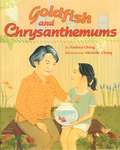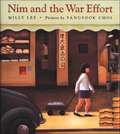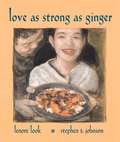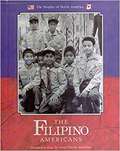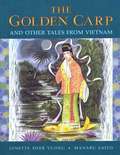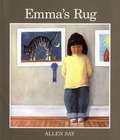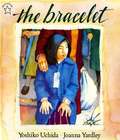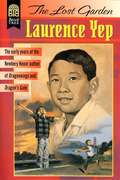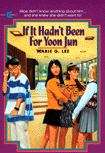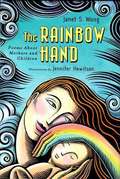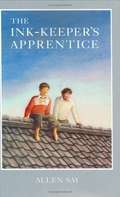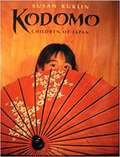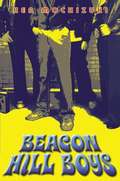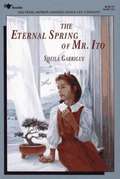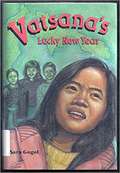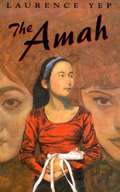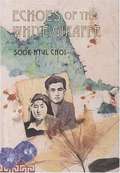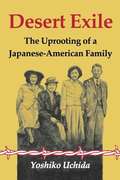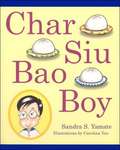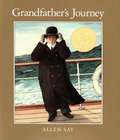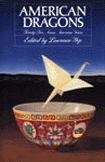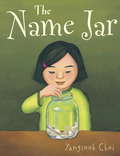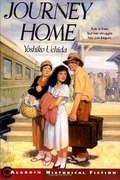Special Collections
National Education Association's Asian American Booklist
- Table View
- List View
Goldfish and Chrysanthemums
by Andrea ChengA Chinese American girl puts her goldfish into a fish pond that she creates and borders with chrysanthemums in order to remind her grandmother of the fish pond she had back in China.
Willie Wins
by Almira Astudillo GillesWillie's father tells him there is something special in an old coconut bank brought from the Philippines, but Willie is embarrassed to take it to school for a contest, especially since he knows that one of his classmates will make fun of him.
Baseball Saved Us
by Ken MochizukiA Japanese American boy learns to play baseball when he and his family are forced to live in an internment camp during World War II, and his ability to play helps him after the war is over.
Nim and the War Effort
by Milly Lee and Yangsook ChoiIn San Francisco during World War II, Nim, a Chinese-American, is determined to win the newspaper drive -- although it is the last day. She realizes her closest rival has cheated. Undaunted, she leaves Chinatown and heads to Nob Hill after school, determined to find more paper.
An ALA Notable Book. An NCSS-CBC Notable Children's Trade Book in the Field of Social Studies.
About the Author: Milly Lee grew up in San Francisco’s Chinatown. She is a retired school librarian and lives in Sonoma County, California.
About the Illustrator: Yangsook Choi grew up in Korea and holds an M.F.A. from the School of Visual Arts in New York City, where she now lives. [powells.com]
Love as Strong as Ginger
by Lenore LookIn this touching storybook, Katie experiences her Chinese grandmother's hard life when she spends a day with her at work at a crab cannery. She sees her "GninGnin" laboring from sun up to sundown to earn just enough money for bus fare, dinner, and a bit left over to help her granddaughter go to college. Katie also catches the twinkle in her grandmother's eye and realizes that she has inherited the strength to fulfill the dreams her grandmother has for her.
The Filipino Americans
by Jennifer SternDiscusses the history, culture, and religion of the Filipinos, factors encouraging their emigration; and their acceptance as an ethnic group in North America.
The Golden Carp and Other Tales from Vietnam
by Lynette Dyer VuongThis book is a collection of six Vietnamese folk tales
Emma's Rug
by Allen SayFrom the book: When Emma is born, she is given a small rug. Mother lays it by the crib, for the day the baby can stand on her feet. By the time Emma climbs out of the crib, no one can remember who gave her the rug. As soon as she can hold a pencil, Emma begins to draw. Her parents are impressed by her mysterious talent. She wins top prizes in the first grade art contest and a citywide competition. Then one day at school Emma refuses to draw. "Do you feel all right?" the teacher asks. Emma only nods and pushes the box of crayons away. Without her beloved rug, Emma believes that she cannot draw. As the story takes an unusual turn, Emma finds her way back to the easel where she has had so much fun. Other books by allen Say are available from Bookshare.
The Bracelet
by Yoshiko UchidaEmi, a Japanese-American in the second grade, is sent with her family to an internment camp during World War II, but the loss of the bracelet her best friend has given her proves that she does not need a physical reminder of that friendship.
The Lost Garden
by Laurence YepYoung Laurence didn't really where he fit in. He thought of himself as American, especially since he didn't speak Chinese and couldn't understand his grandmother, who lived in Chinatown. But others saw him as different in the conformist American of the 1950s. In this engaging memoir, the two-time Newbery Honor author tells how writing helped him start to solve the puzzle.
If It Hadn't Been For Yoon Jun
by Marie G. LeeSeventh grader Alice's life couldn't be better. She has two fabulous best friends, a boy from the football team who seems to like her, and she has just been chosen to be on the junior high cheerleading squad. But then Yoon Jun moves to town, and because he is Korean, like Alice, her father tries to make her be friends with the new boy. But Alice thinks Yoon Jun is kind of a dork and can't figure out why she should have to be friends with him simply because they happen to come from the same country. Alice was a baby when her parents adopted her and brought her to the U.S. so she doesn't remember anything about Korea and considers herself 100% American. But then Alice and Yoon Jun are assigned to work on a project together for their school's International Day, and Alice discovers that spending time with Yoon Jun might not be so terrible after all.
The Rainbow Hand
by Janet S. WongA collection of eighteen original poems about mothers and motherhood, including "Mother's Heart," "Old Mother Chung," and "The Pilot."
The Ink-Keeper's Apprentice
by Allen SayA fourteen-year-old boy lives on his own in Tokyo and becomes apprenticed to a famous Japanese cartoonist.
Kodomo
by Susan KuklinSeven Japanese children are the guides for this informative, insightful look at daily life and traditional Japanese customs and culture. Nozomi describes his noisy math class, where the teacher calls out addition problems and students scramble to find the answer on their abacus. Beautiful Ai tells of the special importance of her kimono, once her mother's, and explains the painstaking process of putting it on. Keiko and Masaaki enjoy the physical and mental strength that comes with their study of kendo and judo, and Masako and Natsuko delight in calligraphy and Japanese dance. .-Lauren Peterson
Beacon Hill Boys
by Ken MochizukiIn 1972 Seattle, a teenager in a Japanese American family struggles for his own identity, along with a group of three friends who share his anger and confusion.
The Eternal Spring of Mr. Ito
by Sheila GarrigueThe fate of a 200-year-old bonsai tree is decided by a young girl and an old Japanese Canadian gardener who resists being imprisoned in an internment camp after the bombing of Pearl Harbor. Sequel to "All the Children Were Sent Away."
Vatsana's Lucky New Year
by Sara GogolTorn between Laotian and American cultures, twelve-year-old Vatsana faces prejudice from a boy at school as she helps her newly arrived Laotian cousin adjust to life in Portland, Oregon.
The Amah
by Laurence YepTwelve-year-old Amy finds her family responsibilities growing and interfering with her ballet practice when her mother takes a job outside the home.
Echoes of the White Giraffe
by Sook Nyul ChoiFifteen-year-old Sookan adjusts to life in the refugee village in Pusan but continues to hope that the civil war will end and her family will be reunited in Seoul. Historical fiction.
Desert Exile
by Yoshiko UchidaDesert Exile chronicles the experiences of a well-to-do Japanese American family before and during the internment of Japanese-Americans during the Second World War.
Char Siu Bao Boy
by Sandra S. YamateCharlie likes char siu bao, Chinese pork buns. He doesn't just like them, he LOVES them! He has them everyday for lunch. But his friends want him to eat something more normal.
Grandfather's Journey
by Allen SayA picture book masterpiece from Caldecott medal winner Allen Say. Lyrical, breathtaking, splendid--words used to describe Allen Say's Grandfather's Journey when it was first published. At once deeply personal yet expressing universally held emotions, this tale of one man's love for two countries and his constant desire to be in both places captures readers' attention and hearts. Images and descriptions available.
The Name Jar
by Yangsook ChoiThe new kid in school needs a new name! Or does she? Being the new kid in school is hard enough, but what about when nobody can pronounce your name? Having just moved from Korea, Unhei is anxious that American kids will like her. So instead of introducing herself on the first day of school, she tells the class that she will choose a name by the following week. Her new classmates are fascinated by this no-name girl and decide to help out by filling a glass jar with names for her to pick from. But while Unhei practices being a Suzy, Laura, or Amanda, one of her classmates comes to her neighborhood and discovers her real name and its special meaning. On the day of her name choosing, the name jar has mysteriously disappeared. Encouraged by her new friends, Unhei chooses her own Korean name and helps everyone pronounce it--Yoon-Hey. From the Hardcover edition.
Journey Home
by Yoshiko UchidaYuki, a 12-year-old Japanese American girl, and her family were sent to a concentration camp in Utah. This is the story of their journey back to Berkeley, California after WWII is over.
